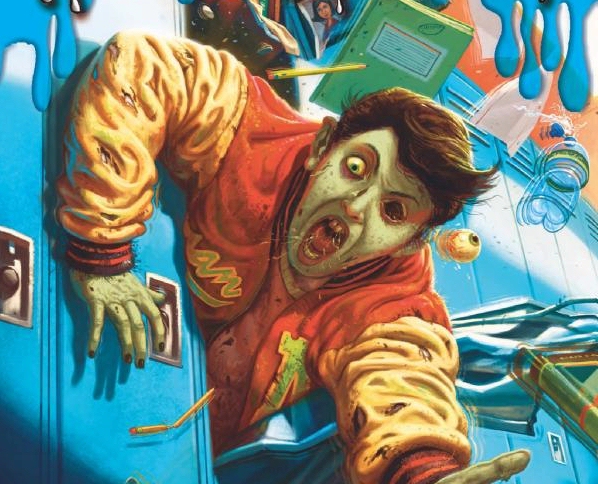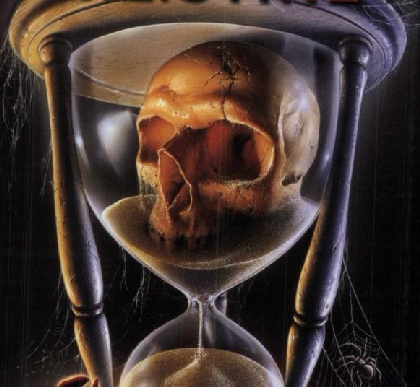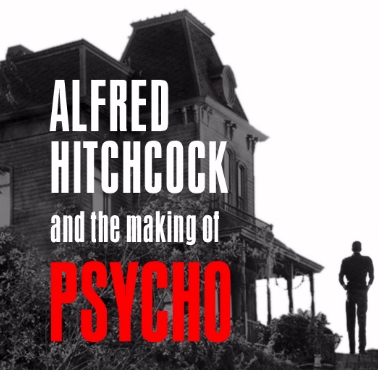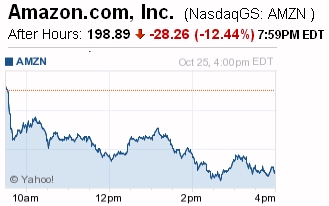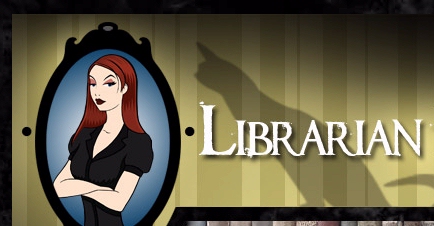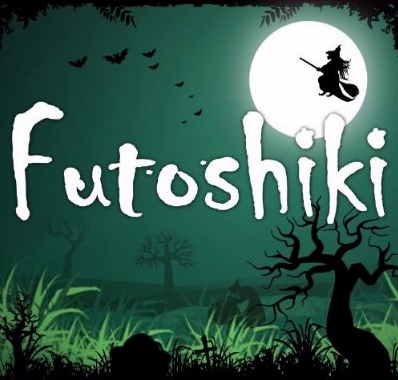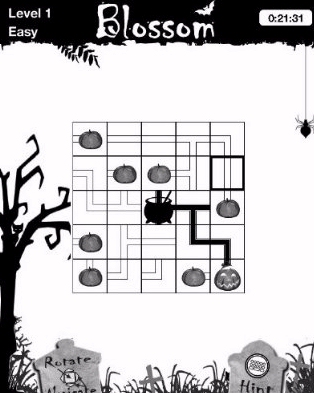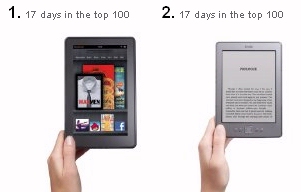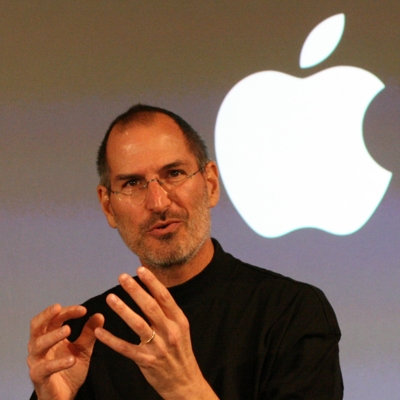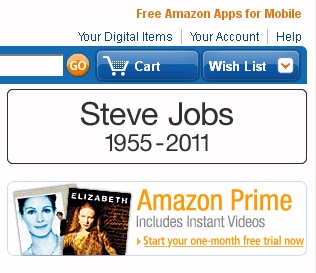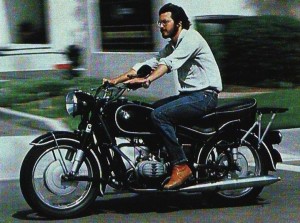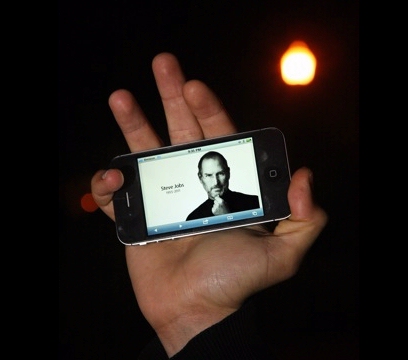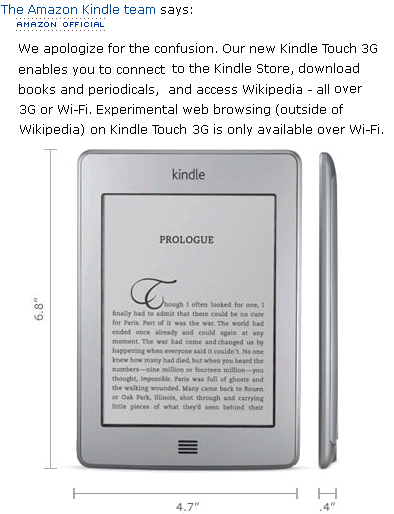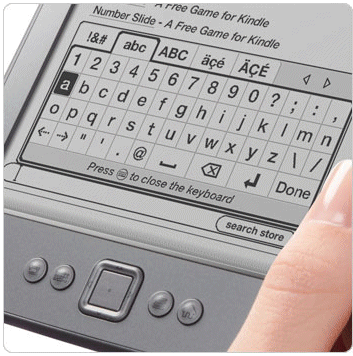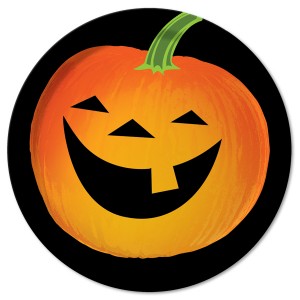
“Where does a ghost go on Saturday night?” Amazon asked its Facebook fans. “Guess the answer, or share your favorite pun-filled Halloween joke in a comment below!” And what amazed me wasn’t the riddle, but the way that it provoked an enormous flood of very creative responses. Now it’s a sunny Halloween afternoon, and I see Amazon’s riddle has racked up nearly 700 different responses from all around the country.
So where does a ghost go on Saturday night?
“To the BOO-vies?” suggested a college student in Georgia.
“To see his ghoul-friend!” suggested another student in Oregon.
“To the spooktacular,” suggested a woman in Arizona.
“Wine and Spirits store” suggested a student in Texas.
“To the spook-easy for a beverage,” said a man in California
“He goes Boo hopping, of course,” posted a woman in North Carolina, “for a bit of brew and spirits.”
I was a little frustrated that I couldn’t find Amazon’s official answer — but I was equally impressed there were so many possibilities! Where does a ghost go on Saturday night?
“The boo-ling alley,” suggested a student in Chicago.
“to the BOOlavard!!” posted one California college student.
“To the boooonies,” posted a woman in Florida.
“Anywhere where he can boo-gie,” suggested a man in New Jersey.
“Up to their boo-doir for some Resting In Peace?” suggested a woman in Arizona.
The best answer of all seemed to come from a Kindle owner. (“Ghosts sit and read boo-ks!”) Another user suggested ghosts go “To BOOks-a-million,” and one comment was apparently inspired by the new popularity of ebooks, posting “Wherever it is, it’s sure not the booooook store.” Author Sharif Khan even used the opportunity to promote his books on Facebook. “Ghosts like to visit my author page and click ‘like’ for some strange reason. It’s a mystery.” But my favorite response wasn’t a pun at all. (“Those ghosts. You can always tell when they’re planning something mischievous — they’re so transparent!”)
What would’ve been confined to a classroom was a virtual conversation across the entire country. It wasn’t even confined to America. Someone even posted an answer from a college in Bangalore, suggesting that on Saturday nights a ghost likes to “Hang out at his favorite haunt!!” And a man in England made a very clever pun, suggesting the ghosts who want to gamble go “To a wraith track!” Halloween had magically united everyone for a moment around a riddle of the random ghost. So one more time — where does a ghost go on Saturday night?
“Scare Dancing!” said a woman in Kentucky.
“He goes to Ho-boo-ken, NJ,” suggested a man in Pennsylvania.
A student at Ole Miss thought the ghosts would go to “A footboo game!”
A student in Michigan suggested “a Boomitzvah!”
“To a boootiful place,” said a woman in Delaware.
“I’d tell you,” posted a woman in Wisconsin, “but it’s un-boo-lievable.”
One response even came from a mother.” My 10 year old says ‘roller scaring’!” And instead of karaoke, one woman suggested the ghosts would sing “Scareyoke!!”
“to the boondocks…”
“to the booseum, to see the moan-ets”
“Out with the ghouls?”
“To the bar and ghoul.”
“To the Ghostry store.”
“the boo-tique”
“To a boo-ery! Haha!”
“He goes BOOzing with his friends! :)”
“He goes bar haunting!”
“That way he can drink some boos…”
“Up to their boo-doir for some Resting In Peace?”
“to his Mummy’s?”
“to the booty parlor”
“Mali-BOO”
“he went to amusement park for (roller GHOSTER)”
“No where,” suggested one woman. “He’s got no body to go with.”
“He goes out to eat and orders Ghoulash. ”
“He works the graveyard shift”
“Out on the Ghosttown of course!”
“Deer Haunting”
“To bed because the sunday they have to get a booo_ stershot”
“She doesn’t go out…she needs her Boo-ty sleep!”
One Missouri student even contributed her own Halloween joke. “Why was the skeleton afraid to cross the road?” she asked. “Because he didn’t have any guts!” And even shorter one-line came from a woman in Arizona. “A Skeleton walked into a bar, and asked for a beer and a mop.” And a woman in Alabama offered this Halloween pun. “What do you call a witch who lives at the beach? A sand-witch!!”
Soon it wasn’t just Amazon’s ghost riddle any more, but a wave of everyone’s most-favorite Halloween joke.
“What do you call a hot dog with no center? A hollow weenie”
“What do Italian ghosts eat: spookghetti”
“What do vegetarian zombies eat? Graiiins, graiiins!”
“What happens when a ghost gets lost in the fog? He is mist.”
Maybe I’m just a big kid who loves the holidays — but it was nice to see so many people having some Halloween fun. It proves that Amazon’s been successful at building a small community of fans for themselves on another social network site, today I also noticed another way Amazon’s integrating themselves with Facebook. When you add something to your Amazon wish list, they can automatically post an “update” about it to your own Facebook page (or your Twitter feed — or even send an e-mail about your wished-for items to your friends). In the long run Amazon may get a few more sales.
But for consumers, it’s also just a new way to have fun.
Happy Halloween!

